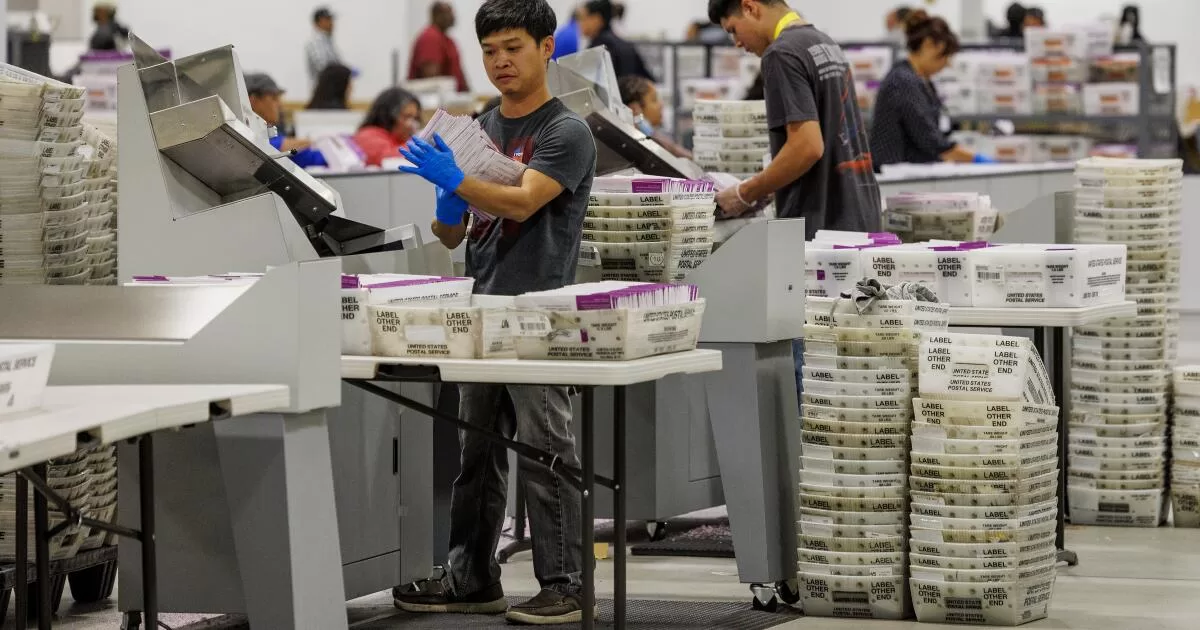It’s been nearly a week since election day, and California is still counting ballots, imposing an agonizing wait on a nation wondering who will lead the next U.S. House of Representatives.
It isn’t a surprise that California is taking its time to verify, process and count the ballots of its more than 22 million registered voters.
While some might see the delay as a problem, Russia Chavis Cardenas, the voting rights and redistricting program manager for California Common Cause, called it a virtue.
“It means elections officials are doing everything they can to count every legitimate ballot fairly and accurately,” Cardenas said.
California has an estimated 5 million ballots that still need to be counted, according to the most recent report of unprocessed ballots by the California secretary of state.
The county that’s leading the pack in unprocessed ballots is Los Angeles, with a daunting 1 million ballots left to count. The ballots waiting to be tallied include same-day ballots, but a majority are vote-by-mail ballots.
A majority of the unprocessed ballots for counties across the state are vote-by-mail.
Registered voters tend to hold onto their vote-by-mail ballots until election day and all turn them in at once, said Kim Alexander, president of the California Voter Foundation.
Counting vote-by-mail ballots isn’t straightforward.
Election officials began processing and verifying vote-by-mail ballots 29 days before election day; however, registered voters who cast their ballot by mail had various ways to turn them in. They could have mailed them on or before election day, put them in a drop box or authorized someone to return the ballots on their behalf.
Vote-by-mail ballot envelopes are checked to ensure they’re signed and the signature matches the signature on file. If a voter’s signature is missing or does not match the signature on file, California law requires elections officials to notify that voter and give them an opportunity to fix the problem, which can also delay the process.
“We give voters lots of opportunities to make sure they’re not disenfranchised,” Alexander said.
For example, the state allows ballots to be accepted seven days after the election, but only if they are postmarked on or before the election.
If a vote-by-mail ballot is dropped off in another county’s drop box, election officials must send it to the correct county recorder’s office to be tallied.
A lot of states don’t have these “fail safes in the system to protect voters and ensure that we have a minimal amount of disenfranchisement,” Alexander said.
To ensure all the votes are counted, the state gives counties 30 days to finalize their tallies, and on Dec. 13 the secretary of state will certify the results.
How ballots are processed isn’t the only factor delaying election results. Minor-party candidates were removed from the general election ballots, leaving only the top two candidates for each race. As a result, there are more votes and thinner margins for the major-party candidates left on the ballot.
It’s always taken California 30 days to count ballots, but Alexander said voters didn’t notice until the margin for control of the House of Representative became so narrow and “everybody is left waiting to find out.”
California has 11 congressional seats that are still undetermined. The California Voter Foundation is monitoring the congressional and legislative contests through the Close County Transparency Project, which aims to give a clear picture of how margins in undecided contests fluctuate as more ballots are counted.
According to the nonprofit, as ballots were counted last week, including on Friday and Saturday, two contests flipped from the Republican candidates to the Democratic candidates taking the lead in Congressional Districts 27 (Los Angeles County) and 47 (Orange County).
As of Saturday, Democratic candidates are leading in five contests, Republican candidates in four, and the remaining two have already been called by the AP, according to the project.
In most congressional contests the nonprofit is tracking, Democratic candidates’ leads have increased and Republican candidates’ leads have decreased as more ballots are counted.
